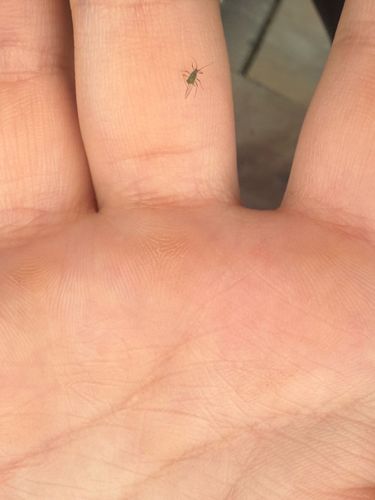Aphid (or Plant Louse)
Scientific Name: Pertains to family Aphididae, specific species cannot be determined from the image.
Order & Family: Order: Hemiptera, Family: Aphididae
Size: Typically 1-4 mm (0.04-0.16 inches) in length.

Natural Habitat
Aphids are found wherever their host plants grow, which includes gardens, agricultural fields, forests, greenhouses, and indoor plants. They are widespread globally in temperate and tropical regions.
Diet & Feeding
Aphids are phytophagous, meaning they feed on plant sap. They use their piercing-sucking mouthparts (stylets) to extract phloem sap from plants. This feeding can lead to stunted growth, distorted leaves, and wilting in host plants.
Behavior Patterns
Aphids reproduce rapidly, often through parthenogenesis (without mating), leading to quick population growth. They tend to cluster on young shoots, leaves, and stems. Many species secrete a sugary substance called honeydew, which can attract ants (who sometimes 'farm' aphids for this honeydew) and lead to sooty mold growth on plants. Some species are winged and can disperse to new host plants, while others are wingless.
Risks & Benefits
Aphids are generally considered significant pests in agriculture and horticulture due to their ability to damage plants and transmit plant viruses. Heavy infestations can lead to substantial crop losses. However, they also serve as a food source for many beneficial insects, such as ladybugs, lacewings, and hoverfly larvae, which are natural predators and aid in biological pest control.
Identified on: 8/31/2025